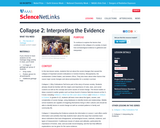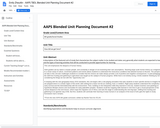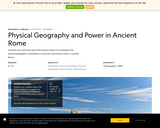
This parent guide supports parents in helping their child at home with the 6th grade Social Studies content.
- Subject:
- Social Studies
- Material Type:
- Reference Material
- Vocabulary
- Author:
- Kelly Rawlston
- Letoria Lewis
- Date Added:
- 10/12/2022

This parent guide supports parents in helping their child at home with the 6th grade Social Studies content.

This resource accompanies our Rethink 6th Grade Social Studies course. It includes ideas for use, ways to support exceptional children, ways to extend learning, digital resources and tools, tips for supporting English Language Learners and students with visual and hearing impairments. There are also ideas for offline learning.

In this lesson, students will understand how ancient civilizations developed based on the local physical features and how the boundaries of early civilizations compare to their modern counterparts.

Before we can begin to study the first peoples, it is important to establish the concept of time. Historians use timelines to help aid in the understanding of the time frame in which the topic under study has taken place. The first step is to establish how the past is organized into sections of time. The organization of time into Eras is a choice made by historians. The sections of time that are being used in this book are divided by major turning points (big events that change humans forever) in history. This book is organizing the major Eras into the following four categories: Prehistory, Ancient History, Middle Ages, and Modern History.

Location, location, location. You may have heard this phrase before. It is used by realtors to explain that the most important thing in selling a house is its location. With the civilizations you are about to study, location might be the most important thing that determined the success of those civilizations.

In this lesson, students use a variety of multimedia resources to analyze the geographic, political, social, economic, and religious structures of the civilizations of Ancient Egypt.

Using an interactive that explores four ancient civilizations - The Maya, Mesopotamia, Chaco Canyon, and Mali/Songhai, students will evaluate and analyze what happens when a society collapses and how archaeologists find and interpret evidence.

This resource explains plant and animal domestication and it effect on humans.

This unit emphasizes the diaspora of human history.
Sixth graders are by nature a myopic people, and constantly in danger of not examining their own assumptions. Teaching large scale human history as a beginning to a closer study of culture, movement patterns and events allows students to understand the miraculous conditions that allowed humans to flourish. The perspective we take in this unit also challenges students to consider that the choices we make always provide a set of positive and negative consequences. In past pedagogy, the shift from hunting and gathering to agriculture was taught as the catalyst of human progress. While that is not entirely wrong, it limits students' thinking by not considering the things we lost with this "opportunity cost."
In keeping with the new geography-heavy 2015 standards, this unit begins with a role-playing simulation that asks students to learn specific biomes to imagine they are plopped down in a certain region of the world, with nothing but a basic tool kit (no clothing, food, or shelter!). Right away students understand the complexity of early survival and the interrelationship with the environment. Then, building on the interpretive skills they learned in Unit one, student examine cave paintings to hypothesis lifestyle choices and necessities for early paleolithic peoples. Students recall the mapping skills learned in Unit One to get a visual perspective of the human diaspora in the next lesson, which maps the migration out of Africa, and sets the stage to understanding the next big topic: shifting from hunting and gathering to an agrarian way of life. But first, students will culminate their learning of early humans in an analysis of the issue of who gets the rights to study Kennewick man's remains.
**From the new AAPS 6th grade curriculum; written by Rachel Toon for ATLAS

Students will read a passage and write to answer questions based on the passage. This resource supports English language development for English language learners.

This lesson presents the story of the Dust Bowl and two activities, which simply demonstrate how the effects of farming practices in the early 20th Century contributed to severe soil erosion of a large portion of the North American grasslands.

In this interactive, students explore an archaeological dig of the remains of a Neolithic town, what has been found there, and what this tells us about history.

In this lesson, students gain an understanding of North Carolina Native Americans, their way of life and their culture by assuming the role of an archeologist and recreating an artifact that would have been used by Native populations in the pre-colonial period.

Students use a physical map of the Roman Empire to investigate how physical geography contributed to economic and military power in ancient Rome.

In this lesson, students will explore past use of natural resources. They will use their knowledge of past civilizations to uncover their use of the environment.

This course was created by the Rethink Education Content Development Team. This course is aligned to the NC Standards for 6th Grade Social Studies.

This course was created by the Rethink Education Content Development Team. This course is aligned to the NC Standards for 6th Grade Social Studies.

In this unit, students will learn about how the earliest civilations lived and how they went from being nomadic hunters to settling down.

This unit will view different cultures from around the world in an attempt to see how they developed and to find similarities and differences in the way they developed and the way they lived.

In this unit, students will learn about the five themes of Geography Mapping: location, place, human environment interaction, movement, and region.